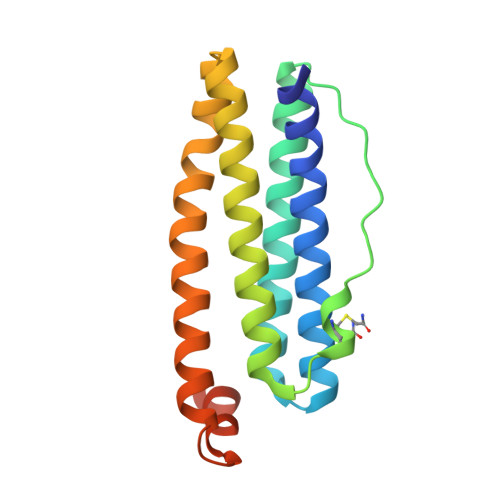A Diatom Ferritin Optimized for Iron Oxidation but Not Iron Storage.
Pfaffen, S., Bradley, J.M., Abdulqadir, R., Firme, M.R., Moore, G.R., Le Brun, N.E., Murphy, M.E.(2015) J Biol Chem 290: 28416-28427
- PubMed: 26396187
- DOI: https://doi.org/10.1074/jbc.M115.669713
- Primary Citation of Related Structures:
4ZKH, 4ZKW, 4ZKX, 4ZL5, 4ZL6, 4ZLW, 4ZMC - PubMed Abstract:
Ferritin from the marine pennate diatom Pseudo-nitzschia multiseries (PmFTN) plays a key role in sustaining growth in iron-limited ocean environments. The di-iron catalytic ferroxidase center of PmFTN (sites A and B) has a nearby third iron site (site C) in an arrangement typically observed in prokaryotic ferritins. Here we demonstrate that Glu-44, a site C ligand, and Glu-130, a residue that bridges iron bound at sites B and C, limit the rate of post-oxidation reorganization of iron coordination and the rate at which Fe(3+) exits the ferroxidase center for storage within the mineral core. The latter, in particular, severely limits the overall rate of iron mineralization. Thus, the diatom ferritin is optimized for initial Fe(2+) oxidation but not for mineralization, pointing to a role for this protein in buffering iron availability and facilitating iron-sparing rather than only long-term iron storage.
Organizational Affiliation:
Department of Microbiology and Immunology, University of British Columbia, Vancouver, British Columbia V6T 1Z3, Canada.
















